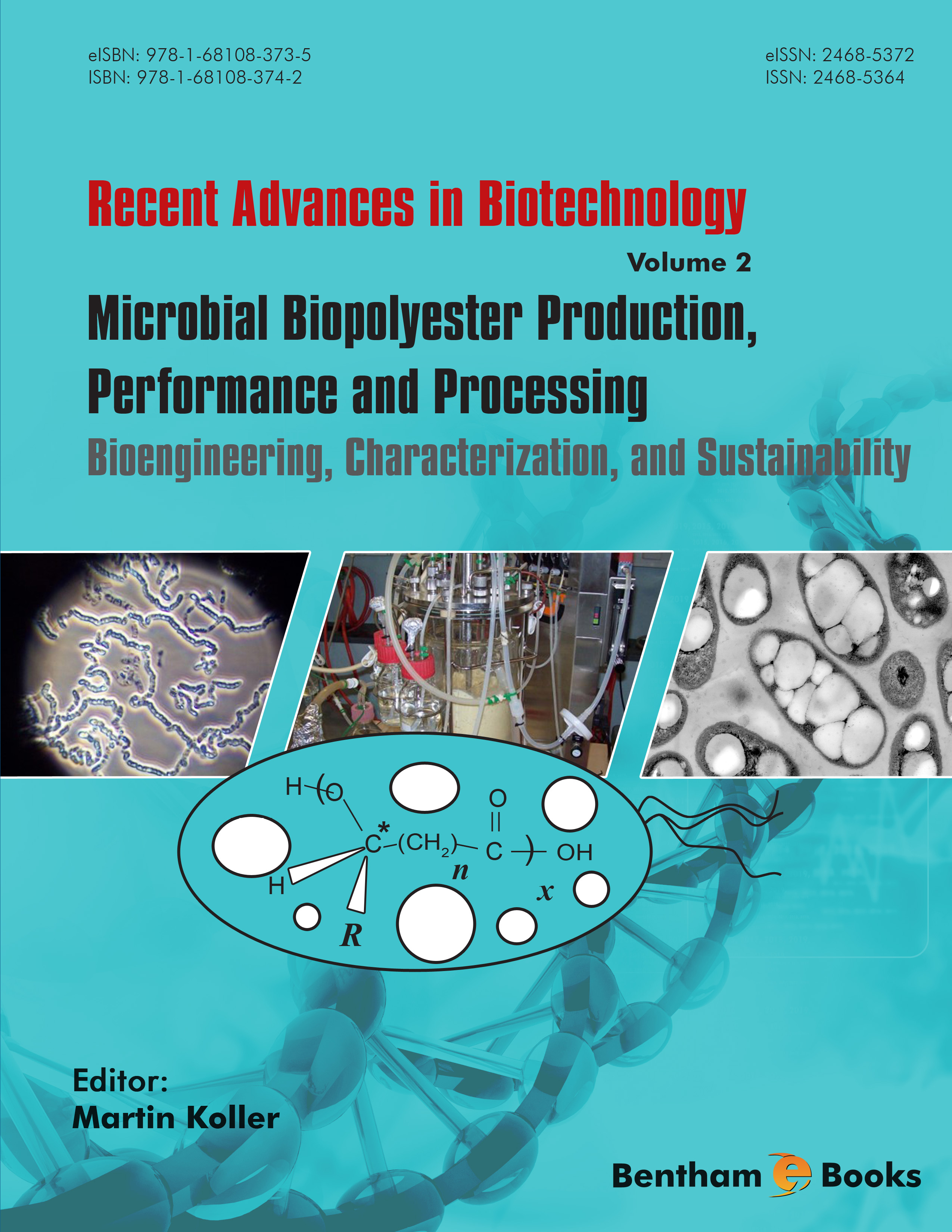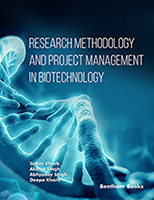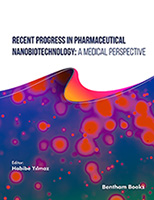I remember my first experience with PHA sometime in the middle eighties of the last century, when Professor Anton Blazej, rector of Slovak Technical University, visited ICI and handed me over about 20 g of this material. The slabs looked as remnants from specimens for impact testing. He strongly recommended to get more information on the material and perhaps to start some research with this „plastics of the future“. I was rather deep involved in material science, aiming mainly on polymeric multiphase systems such as blends and composites and appropriate procedures of their modification to get particular properties for specific applications. That time the basic polymer for me was polypropylene; concerning biopolymers, we carried out some marginal investigations on mixtures of starch with polyethylene. However, the amount of PHA was too small to perform even preliminary material testing; in addition, no information on the composition was provided, so we just accepted it as an interesting but still „exotic“ material. However, I could not continue ignoring the PHA for long time since, in 1991, Dr. Hanggi, the owner of the company Biomer, Germany, addressed me with the request to make some measurements of mechanical properties on PHB which Biomer was producing and selling on commercial basis. He provided more or less unlimited amount of material (considering laboratory scale of research), so, besides the tests for Biomer I could really start to play with the PHB in the lab.
Biodegradable plastics started to become my main research topic at the end of the nineties, when Stanislav Miertus, professor at ICS UNIDO Trieste (my former colleague at Polymer Institute SAS in Bratislava, where we worked at the same time on our PhD theses) invited me to Trieste for a workshop on BDPs and asked me to give a short lecture on BDP´s situation regarding research and application in Slovakia. He was surprised when I offered a full lecture on our research on modification of PHB. That time, Miertus was organizing a set of workshops under UNIDO auspices, and supported promoting the idea of BDPs by colecting a number of scientists including top researchers in this area. Since I was honoured to be invited to be a member of this group, within this scheme, I had an unique opportunity to meet and discuss all aspects of BDPs with leading experts in this field, such as Gerhart Braunegg, Emo Chiellini, Ramani Narayan and number of others. Moreover, we had the opportunity to visit various countries (each workshop was supported by UNIDO but organized by local organizers in a particular country for a selected region), and to get familiar with various attempts and attitudes to contribute to the development of applicable BDPs.
The research and promotion of PHAs was one of the most important topics discussed in this expert pool. Within the group, all relevant aspects concerning BDPs were considered with the main concern devoted to PHA and PLA. Generally, it was agreed that to achieve a substantial increase in production of BDPs, the materials must be suitable for high volume applications; packaging materials were considered as the most prospective goods since biodegradability could be of great advantage offering an alternative way to current waste management to handle the vast and continuously growing amount of plastics garbage. However, this market was occupied by polyolefins and PET. To be competitive, two basic conditions had to be met. The BDPs should have the ultimate properties as well as processing parameters similar to currently used materials and the price should approximate the cheapest variants of petroplastics. That time it was believed that if BDPs would have suitable properties, a price approximately double of polyethylene would be acceptable, taking into account simpler waste management logistics and also positive response of the public regarding the environmental feasibility. However, a vicious circle appeared due to the fact that PHA and PLA seemed to be too expensive for high volume application and, consequently, because of low consumption and low production amounts on the pilot scale level, the price remained high.
The aspect of price of PHAs was generally tackled by research aimed to preparation and effective production of PHB and related copolymers, where the main concern was to make the prospective production cheaper. To achieve this, various substrates were investigated, mainly carbonaceous sources of waste. An example of such approach was represented by the project WHEYPOL, granted by the 5th EU Framework Programme, coordinated by Gerhart Braunegg. The goal was to produce PHB from whey available in large quantities as a waste stream from production of cheese. The project was successful and the major outcome was the design and setup of complete production facility for production of PHB with capacity 20,000 tons per year. This amount was considered as optimal from point of view of initial investment needed and final cost of the polymer being competitive enough. The plan was to build up a pilot production plant with a capacity of 800 t per year which could produce commercial material but the main goal was to prove that the technology is feasible also on industrial scale. Unfortunately, the proposal sumbited to EC for the aspired demonstration project was rejected with reasoning that for this type of projects no demonstration projects are supported. (In this context, recently I saw statistics data on the ratio of budget for reseach from public resources, showing that in USA the ratio between basic research, applied research and demonstration was 24/28/48, in China 11/32/57, which is in huge contrast to the figures for the EU: 92/2/6 [http://youtu.be/oy_wxg5-nyY]. Obviously significant number of results of European research paid from EU sources is applied outside the EU region). Consequently, private investors were considering to take over, even an investor from Slovakia was quite keen to invest 2 millions EURO needed for the pilot plant construction. Gerhart Braunegg and Martin Koller acted as consultants in discussions regarding the optimal technology and especially feasible substrates for grow of bacteria and selection of powerful microbial species. Unfortunately, before we were able to come to an acceptable conclusion, the financial crisis knocked all plans on the head, and the investor was happy to be able at least to save his current business running.
The second strategic aspect in promoting the development of BDPs consisted in properties, both ultimate and regarding aspects of their processing. The main problem with ultimate properties is represented by rather high Tg of PLA (about 60 oC) and although the value for PHB is below RT (around 10 oC), still both materials are extremely brittle. Moreover, both (especially PHB) suffer from quite pronounced physical ageing leading to lowering the thoughness; this makes the material even more brittle within a period of few weeks of storing. Regarding processing, the main problem was that at processing temperature of PHB being at least 180 oC or more, thermal degradation via hydrolysis proceeds too fast. Steep decrease of molecular weight was reported, contributing to further increase of brittleness; certain auspicious technologies, especially film blowing were impossible to be applied.
However, at the beginning of this millennium, the situation began to change. Globally, a number of research teams has been interested in biodegradable compostable plastics, important achievements were reported and patented dealing with all aspects which prevent high volume application of BDPs. Moreover, industry started to seek on the potential of compostable plastics for packaging and real commercial applications appeared first in small volume but gradually the production has been rising. A substantial contribution to this trend was launched by starting production of PLA by Cargill with a capacity 150,000 tons per year, as a first really high volume production of a compostable, biodegradable polyester. Today, production of biodegradable compostable plastics is claimed to be raising by 20 % per year. In spite of this the portion of biodegradable plastics in overall plastics world production is only around 1 %.
While at the beginning of the millenium, the main advantage of BDPs concerning the environmental effects was seen in biodegradability and prospective compostability, recently new attitude is stressed, namely biobased origin is claimed to be the most valuable environmental contribution. This trend is related to carbon dioxide production as a reason for global warming. Materials based on renewable resources are defined as „CO2 neutral“, it means that the same amount of CO2 consumed for creation of the renewable organic raw material is released at the end of lifetime of the product, regardless on the way of the waste disposal. Thus, the classical plastics (mainly petrobased) are adjusting to new environmental trends by creating biobased polyethylene or poly(ethylene terephthalate). The compostability would by such a way be considered as less important, although still usefull when considering the application of new environmentally friendly plastics.
While in the past the scientific projects were aimed almost entirely to scientific and technological development, recently more concern is devoted to broader goals, where a significant part of work (and funds) is aimed to networking, seminars for companies and dissemination to a broader public (including TV and radio); in this kind of projects scientific reseach is performed mainly as case studies. Even under this scheme I was a partner in an ERDF project PLASTiCE (coordinated by Andrej Kržan who authored chapter 2 of this ebook volume) where, besides others, also a biodegradable blend based on PLA and PHB was successfully tested for production of packagings for eggs by thermoforming.
Coming to the end I would like to stress two, in my view, important non-scientific aspects. The first one is related to the impatience of both scientists and industry to apply the new, apparently valuable, results as soon as possible. If the product is not sufficiently tested, i.e., it passes the standard tests, but the conditions of utilizations as well as disposal issues are not addressed in all details, it may happen that the product fails under certain circumstances which were not expected to be crucial. Such failure will probably disqualify the product from further utilization but, at the same time, the public extends the failure to the whole group of novel, biodegradable plastics. By such a way, an irresponsible application may create opposition and retard the development of many useful environmentally sound solutions.
The other comment is aimed to compostable plastics which may turn to be a valuable alternative to the current technologies of waste management. To design excellent biodegradable compostable plastics in the lab and to develop a suitable technology is just the very first step. It has to be realized that from the environmental point of view, „biodegradable“ and „compostable“ per se means nothing. What really counts is the product which, after passing its lifetime, is de facto „biodegraded“ and „composted“. To complete this task, the full value chain must be designed from commercial production of materials and industrial production of goods up to collecting waste, sorting and transporting it to composting plants, which, of course, must be available. An important part of this line is also certification and labeling of compostable, biodegradable and/or biobased materials and products so that the collection and sorting of waste would be easier. Establishment of a certification scheme in Slovenia and Slovakia was also a goal accomplished within the PLASTiCE project mentioned above.
In my view, the current situation for biodegradable plastics looks promising. It seems that all questions related to application of compostable materials are defined, many are fully or at least partially answered. Concerning areas where, up to now, research efforts did not point out clearly promising way, degradability of plastics in marine environment should perhaps be mentioned as the most important challenge. Regarding biodegradable polyesters, especially PHAs and PLA, considering the above detailed current concerns, both are biobased and their compostability is as an important extra bonus, so that new materials for various applications are applied in growing volumes, industry indeed is interested to participate in this area and response of the general public is generally highly positive.
 Prof. Ing. Dr. Ivan Chodak
Prof. Ing. Dr. Ivan Chodak
Polymer Institute
Slovak Academy of Science
Bratislava
Slovakia
Tel: +421-2-3229 4340
e-mail: upolchiv@savba.sk






